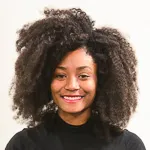The Cantor Arts Center now has an exhibit titled “Promised Land: The Art of Jacob Lawrence.” Celebrated Black artist Jacob Lawrence was commissioned in 1975 by The Detroit Institute of Arts to remake his 1941 work, “The Legend of John Brown.” Accompanied by a poem written by Robert Hayden, the first Black Poet Laureate of the United States, this set of prints tells the story of John Brown, a White, radical abolitionist who believed he was instructed by God to end the evils of slavery.
Brown liberated slaves from plantations, resulting in a bounty on his head. Despite many who wanted him dead, Brown mobilized and armed a band of committed abolitionists and newly liberated slaves for his final attack on Harper’s Ferry in 1859. Brown was condemned and executed the following day, agitating the country toward Civil War.
John Brown was executed for his revolutionary views, which we celebrate today as evident and apparent to the ideals we now hold true in this country. His contribution was rebellion and disobedience. Through art, Lawrence was able to hold a mirror up to America’s past and tell the truth about radical visionaries: they are unpopular and often seen as extremists. The prints of John Brown by Jacob Lawrence immortalize and romanticize the ongoing struggle of the radicals who are willing to fight for freedom. It is the place of writers and artists to struggle with them and to document their truths.
To be on the side of justice and revolution is a blessing; we must fight on. We must write. We must tweet. We must dance. We must protest. We must sing. We must create. We must dream. We must imagine. We must boycott. We must march. We must agitate. We must celebrate. We must cry. We must teach. We must learn. We must laugh. We must know that the struggle for more freedom includes the John Browns and Jacob Lawrences. We must be the John Browns and Jacob Lawrences.
There is a place for everyone within the movement for freedom. Many have asked me where their place is in the moment for justice, and I believe that only they can answer that for themselves. The options are infinite, and each person is intrinsically valuable. But one must never forget that the movement is built upon the ideology of centering the most vulnerable of us to get to justice. This means not co-opting the language of today’s movement about black lives or making it a watered down version of your own vision of equality. It means centering the most marginalized identities and making their safety and liberation a priority. If proper ideological centering is done, then one is able to plug into the movement with the role they feel they are destined to play, just like John Brown.
Scholar and poet Alysia Harris has a “Figure 8 Theory” that classifies the eight types of activists: the agitator, the connectionist, the organizer, the specialist, the spokesperson, the artist, the scholar and the counselor. These distinct types of activists come with specific skill sets and work in synergy with each other to create a network that can produce a movement.
The agitator takes it to the streets. The connectionist negotiates with places of power. The organizer is the non-reactionary force that brings the pieces together for an action. The specialist has their area of expertise and they know how to problem solve. The artist is honest; they shine a mirror to our faces while creating the world we want through their art. The scholar gifts us with the language and theoretical framework that brings understanding to our world. The counselor takes care of our souls. Each person is vital, and there are many other roles to be filled that are absent from this theory.
I choose to plug in as scholar, writer and artist. Activism and a place in the movement is not a choice. It is a lifestyle and a purpose that I feel is my duty to pay for the ones I live for, and it is an act of self-preservation and self-love. I am a student to the scholars, writers and artists before me in the movements around the world demanding justice. My role is what makes me feel fulfilled, and it is how I will make my contribution.
What is your role?
Jacob Lawrence is one of the most significant artists of the 20th century. He illustrated the Black experience, and through abstraction he gave Blackness form in spaces with relatively few Black faces. He was true to his art and true to his contribution. As agitators, artists, teachers — everyone in their respective places — we all can make a contribution. We can all take part in this movement. We can all live our own truths. We can all become free.
Contact Mysia Anderson at mysia ‘at’ stanford.edu.
